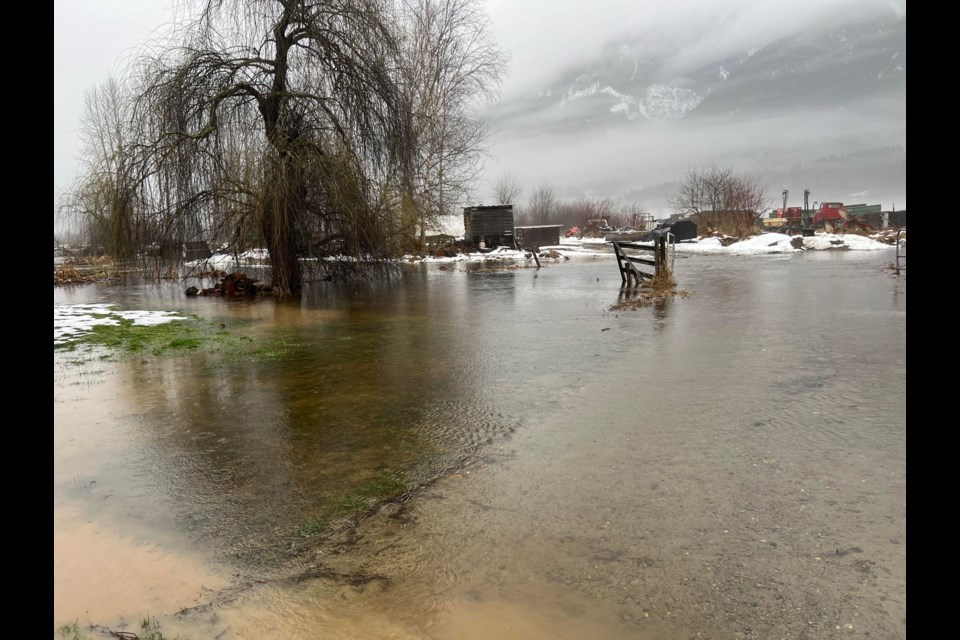The Squamish-Lillooet Regional District (SLRD) recently adopted minor changes to its building bylaws, and included a clause reducing the cost of building permits for reconstruction of property damaged in an event declared a provincial or local emergency by 30 per cent.
The amendment to the building bylaw cleaned up some language to make the SLRD bylaws on farm buildings align with the BC Building Code, and added policy to soften the pressure on parts of the community affected by the 2023 wildfire season.
The new policy will reduce the cost of applying for a building permit to rebuild in affected areas (and only for assessed damage linked to the emergency) by 30 per cent within a three-year window of the emergency being declared, whether on a provincial or local level.
While the change is in response to the 2023 wildfires, it will apply to all emergencies in the SLRD going forward.
“We modelled this after similar regional districts around the province who have suffered similar levels of structure loss,” said the SLRD’s chief building officer, Jay McEwen, at the Jan. 24 board meeting.
“Building permit fees are a driver of revenue for the regional district … we thought 30 per cent was a fair number and an incentive for people to actively pull building permits in an area where people weren’t otherwise incentivized to build inside the building bylaw.”
The reduction in fees is limited to documented damaged as assessed; to restoration of a structure and plumbing to its state prior to the event; must be applied for within three years of the emergency; and can only be applied for by the owners of the property.
The SLRD board voted unanimously to approve the amendments, which were adopted.
Money for gravel
A total of $10,000 will be spent repairing Misty’s Lane, a 100-metre stretch of road used to access a handful properties on both sides of the Cheakamus River up Paradise Valley.
The request brought forward by Area D Director Tony Rainbow noted the residents along the lane pay taxes to clear snow from and maintain a BC Hydro right-of-way road, but those services don’t extend to Misty’s Lane, which has deteriorated significantly over the years.
“The condition of this small road has deteriorated considerably and there are now holes that are too large to be called potholes,” read’s Rainbow’s request for funding.
“I would like to provide some funds to significantly improve Misty’s Lane which would be immediate relief, and then ask staff what we need to do to get Misty’s Lane included in any work that we do on the right-of-way.”
At the Jan. 24 board meeting, Rainbow said the SLRD should consider maintaining the road because of the taxes residents pay. Discussion surrounded the question of whether the one-time allocation of funds would constitute the SLRD taking on maintenance of the road and adding to its budget commitments, but the decision was made to allocate the funds from the Area D Amenities Fund anyway, with the issue to be looked at further in the future.
The $10,000-quote came from the same contractor that maintains the BC Hydro right-of-way, with the funds to go into grading and building up Misty’s Lane to make it level, and easier to maintain.
Rainbow said it is a long-term goal to have the Ministry of Transportation and Infrastructure take over maintenance of the road.
The funds were allocated from the Area D Amenities Fund, which is fed by contributions from developers’ projects in Area D.
As of Jan. 24, the work was already done.
Budget planning
It’s budget season (again) for the SLRD, with the Committee of the Whole receiving its first draft report and budget numbers at its Jan. 25 meeting in Pemberton.
The draft report covered some highlights, with director of finance Suzanne Lafrance giving a presentation on changes to BC Assessment values across the SLRD, increases in budget pressures, and high-level updates on opportunities for savings and some of the projects coming down the pipeline in 2024.
Overall, assessed values across the four municipalities and four electoral areas increased by 1.68 per cent year over year, to $47,086,551,466.
Further reports for the 2024 budget and five-year financial plan will be presented to the SLRD Committee of the Whole and board in February.




